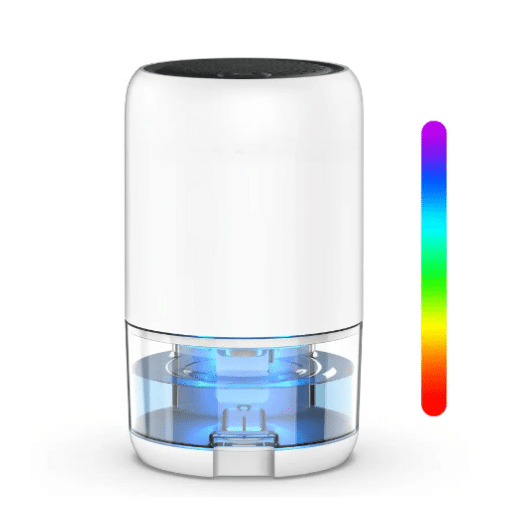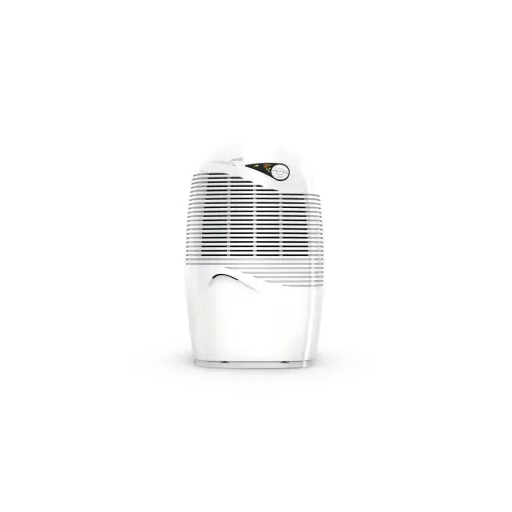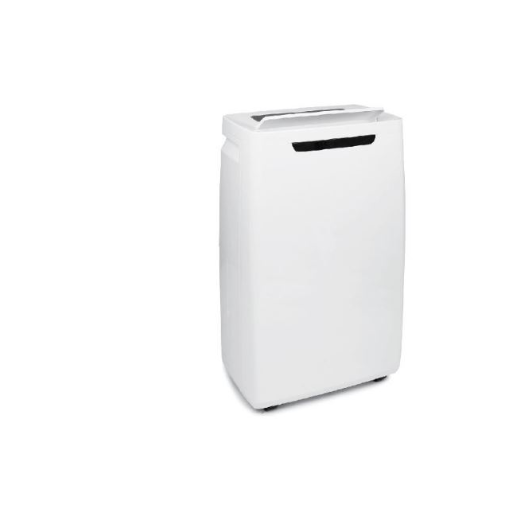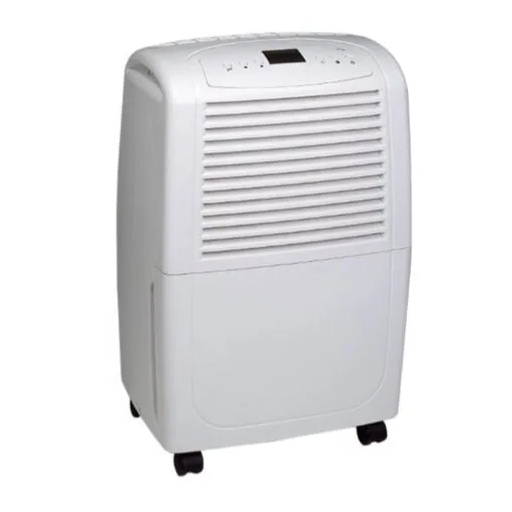Understanding Dehumidifier Functionality

How a Dehumidifier Works
A dehumidifier extracts moisture from the air by reducing humidity levels in enclosed spaces. The process involves:
- Air intake: Drawing air through an intake vent over cooled coils
- Condensation: Moisture condenses into water droplets on cold coils
- Collection: Water is collected in a reservoir or drained away
- Air return: Dry air is slightly reheated and expelled back into the room
Importance of Dehumidifiers in Crawl Spaces
Crawl spaces are particularly susceptible to moisture problems due to:
- Limited ventilation
- Ground-level positioning
- Proximity to soil moisture
- Poor insulation
| Problem | Without Dehumidifier | With Proper Dehumidification |
|---|---|---|
| Mold Growth | High risk in humid conditions | Prevented by maintaining 30-50% RH |
| Wood Rot | Structural damage to supports | Wood preserved, structure protected |
| Air Quality | Musty odors, allergens | Cleaner, healthier indoor air |
| Pest Issues | Attracts termites, dust mites | A less attractive environment for pests |
Common Reasons for Constant Operation

High Humidity Levels in the Crawl Space
The most common cause of a constantly running dehumidifier is excessive moisture. Contributing factors include:
- Poor ventilation – Inadequate air circulation
- Standing water – Leaks or drainage issues
- Inadequate insulation – Temperature fluctuations causing condensation
- Foundation cracks – Allowing moisture intrusion
Incorrect Settings or Control Adjustments
Improper settings can significantly impact dehumidifier performance:
- Too low settings: Maximum energy consumption, premature wear
- Too high settings: Inadequate moisture control, mold risk
- Wrong fan speed: Inefficient operation for current conditions
- Poor calibration: Inaccurate humidity readings
Mechanical Issues Affecting Performance
Various mechanical problems can cause constant operation:
| Component | Common Issues | Impact on Performance |
|---|---|---|
| Compressor | Wear, refrigerant leaks, overheating | Poor refrigeration cycle, reduced efficiency |
| Fan Assembly | Damage, clogs, misalignment | Restricted airflow, heat exchange problems |
| Coils | Dirt buildup, biofilm, frost | Reduced thermal conductivity, higher energy use |
| Motors/Belts | Loosening, misalignment, wear | System inefficiency, rapid degradation |
Troubleshooting Common Problems

Checking Filters and Maintenance
Proper filter maintenance is crucial for optimal performance:
- Inspection frequency: Check every 2-4 weeks, depending on usage
- Cleaning process: Rinse with lukewarm water, dry completely before reinstalling
- Replacement schedule: Follow manufacturer guidelines for non-washable filters
- Advanced monitoring: IoT sensors can provide real-time filter status alerts
Ensuring Proper Placement
Location significantly impacts dehumidifier efficiency:
- Clearance requirements: Maintain 12-18 inches on all sides
- Moisture source proximity: Place nearthe wettest areas when possible
- Temperature considerations: Avoid drafty or extremely cold locations
- Drainage access: Position near drain outlets for continuous operation
Adjusting Settings for Optimal Performance
Recommended Settings:
- Relative Humidity: 30-50% for most applications
- Fan Speed: Auto mode for adaptive operation
- Timer Settings: Align with environmental patterns
- Energy Features: Utilize programmable controls and sensors
Impact of Constantly Running Dehumidifiers
Energy Efficiency Concerns
Continuous operation affects energy consumption through:
- Extended runtime increases power usage
- Inefficient operation due to poor maintenance
- Oversized or undersized units for the space
- Lack of smart controls and sensors
Higher Electricity Bills Explained
| Factor | Impact on Costs | Solution |
|---|---|---|
| Unit Age/Condition | Older units consume more power | Regular maintenance, consider upgrading |
| Environmental Conditions | High humidity increases runtime | Address moisture sources, improve insulation |
| Unit Size | Wrong size = inefficient operation | Proper sizing calculation for space |
| Smart Features | Manual operation wastes energy | Upgrade to units with sensors and auto-shutoff |
Potential Wear and Tear
Continuous operation accelerates component degradation:
- Compressor stress: Overheating, refrigerant issues, efficiency loss
- Fan assembly wear: Dust buildup, bearing failure, reduced airflow
- Electrical component failure: Circuit board issues, sensor malfunction, wiring problems
Maintenance Tips for Prolonging Dehumidifier Life

Regular Cleaning and Filter Replacement
Follow this maintenance schedule for optimal performance:
- Weekly: Empty and clean the water collection bucket
- Bi-weekly: Inspect and clean the air filter
- Monthly: Check coils for dust or frost buildup
- Seasonally: Deep clean all components, inspect for wear
Proper Storage Techniques
When storing your dehumidifier:
- Clean and dry all components thoroughly
- Store in a cool, dry location
- Keep the unit upright to prevent refrigerant settling
- Cover with dust-proof material
- Inspect before returning to service
Routine Performance Checks
Monthly Inspection Checklist:
- Air filter condition and cleanliness
- Water tank for cracks or residue
- Coil condition (frost, dirt buildup)
- Unusual noises or vibrations
- Power cord and electrical connections
- Control panel responsiveness
- Humidity extraction rate verification
Frequently Asked Questions (FAQ)
References
- Improving the energy efficiency of dehumidification technology at a large facility in Florida– This paper discusses energy efficiency in dehumidification systems and the effects of constant operation.
- Further Investigation of Energy and Performance Impacts of Whole-House Dehumidifier Duct Configurations– This study examines the performance and energy impact of dehumidifiers in residential settings.
- Optimizing energy efficiency and improved dehumidification performance of variable capacity air conditioning systems– This research addresses the implications of dehumidification for relative humidity control and energy considerations.




